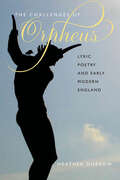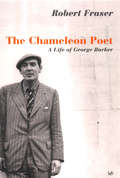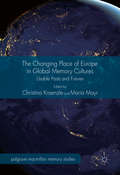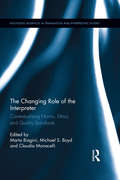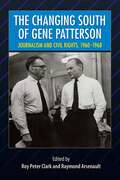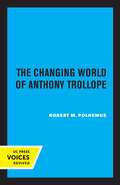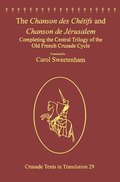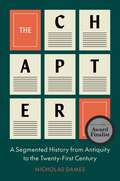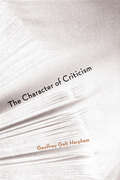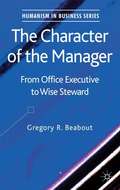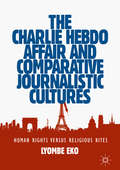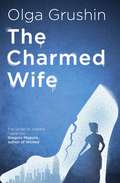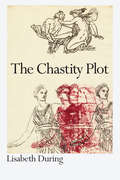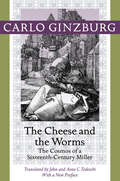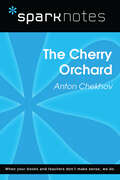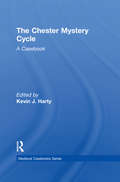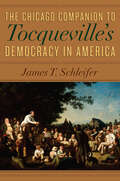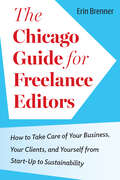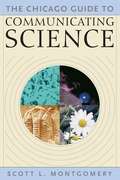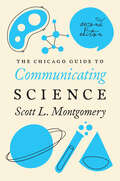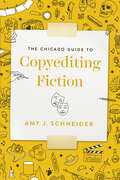- Table View
- List View
The Challenges of Orpheus: Lyric Poetry and Early Modern England
by Heather DubrowThis critical exploration of how we define lyric poetry is “thorough, penetrating, and on the cutting edge of contemporary scholarship” (Choice).As a literary mode “lyric” is difficult to define. The term is conventionally applied to brief, songlike poems expressing the speaker’s interior thoughts, but many critics have questioned the underlying assumptions of this definition. While many people associate lyric with the Romantic era, Heather Dubrow turns instead to the poetry of early modern England. The Challenges of Orpheus confronts widespread assumptions about lyric, exploring such topics as its relationship to its audiences, the impact of material conditions of production and other cultural pressures, lyric’s negotiations of gender, and the interactions and tensions between lyric and narrative.Dubrow offers fresh perspectives on major texts of the period—from Sir Thomas Wyatt’s “My lute awake” to John Milton’s Nativity Ode—as well as poems by lesser-known figures. She also extends her critical conclusions to poetry in other historical periods and to the relationship between creative writers and critics, recommending new directions for the study of lyric and of genre.A Choice Magazine Outstanding Academic Title
The Chamber of Maiden Thought: Literary Origins of the Psychoanalytic Model of the Mind (Psychology Revivals)
by Margot Waddell Meg Harris WilliamsLiterature is recognised as having significantly influenced the development of modern psychoanalytic thought. In recent years psychoanalysis has drawn increasingly on the literary and artistic traditions of western culture and moved away from its original medical–scientific context. Originally published in 1991 The Chamber of Maiden Thought (Keats's metaphor for 'the awakening of the thinking principle') is an original and revealing exploration of the seminal role of literature in forming the modern psychoanalytic model of the mind.The crux of the 'post-Kleinian' psychoanalytic view of personality development lies in the internal relations between the self and the mind's 'objects'. Meg Harris Williams and Margot Waddell show that these relations have their origins in the drama of identifications which we can see played out metaphorically and figuratively in literature, which presents the self-creative process in aesthetic terms. They argue that psychoanalysis is a true child of literature rather than merely the interpreter or explainer of literature, illustrating this with some examples from clinical experience, but drawing above all on close scrutiny of the dynamic mental processes presented in the work of Shakespeare, Milton, the Romantic poets, Emily Bronte and George Eliot.The Chamber of Maiden Thought will encourage psychoanalytic workers to respond to the influence of literature in exploring symbolic mental processes. By bringing psychoanalysis into creative conjunction with the arts, it enables practitioners to tap a cultural potential whose insights into the human mind are of immense value.
The Chameleon Poet: A Life of George Barker
by Robert FraserThe poet George Barker was convinced that his biography could never be written. 'I've stirred the facts around too much,' he told Robert Fraser. 'It simply can't be done.' Eliot wrote of his 'genius'. Yeats thought him the most interesting poet of his generation. Dylan Thomas envied his power over women. War trapped him in Japan. In America he conducted one of the most celebrated love affairs of the century. He fathered fifteen children in several countries, three during one battle-torn summer. By the 1950s he was the toast of Soho. Barker was Catholic and bohemian, frank and elusive, tender and boisterous. In Eliot's phrase, he was 'a most peculiar fellow.' Robert Fraser's biography offers both a portrait of a talented, tormented and irresistibly entertaining man, and a broad cultural landscape. Around the central figure cluster painters like Francis Bacon, Lucian Freud, Johnny Minton and the 'Roberts' Colquhoun and MacBryde; writers such as Dylan Thomas, Walter de la Mare and Elizabeth Smart, whose By Grand Central Station I Sat Down and Wept hymns their liaison; the lugubrious humorist Jeffrey Bernard. After closing time at the Colony Room, Minton declared, they had to sweep up the jokes.
The Change of Narrative Modes in Chinese Fiction (1898–1927)
by Pingyuan ChenThis book examines the Chinese fictions (xiaoshuo) published between 1898 and 1927 – three pivotal decades, during which China underwent significant social changes. It applies Narratology and Sociology of the Novel methods to analyze both the texts themselves and the social-cultural factors that triggered the transformation of the narrative mode in Chinese fiction. Based on empirical data, the author argues that this transformation was not only inspired by translated Western fiction, but was also the result of a creative transformation in tradition Chinese literature.
The Changing Place of Europe in Global Memory Cultures: Usable Pasts and Futures (Palgrave Macmillan Memory Studies)
by Christina Kraenzle and Maria MayrThis book investigates the transnational dimensions of European cultural memory and how it contributes to the construction of new non-, supra, and post-national, but also national, memory narratives. The volume considers how these narratives circulate not only within Europe, but also through global interactions with other locations. The Changing Place of Europe in Global Memory Cultures responds to recent academic calls to break with methodological nationalism in memory studies. Taking European memory as a case study, the book offers new empirical and theoretical insights into the transnational dimensions of cultural memory, without losing sight of the continued relevance of the nation. The articles critically examine the ways in which various individuals, organizations, institutions, and works of art are mobilizing future-oriented memories of Europe to construct new memory narratives. Taking into account the heterogeneity and transnational locations of commemorative groups, the multidirectionality of acts of remembrance, and a variety of commemorative media such as museums, film, photography, and literature, the volume not only investigates how memory discourses circulate within Europe, but also how they are being transferred, translated, or transformed through global interactions beyond the European continent.
The Changing Role of the Interpreter: Contextualising Norms, Ethics and Quality Standards (Routledge Advances in Translation and Interpreting Studies)
by Marta Biagini Michael S. Boyd Claudia MonacelliThis volume provides a critical examination of quality in the interpreting profession by deconstructing the complex relationship between professional norms and ethical considerations in a variety of sociocultural contexts. Over the past two decades the profession has compelled scholars and practitioners to take into account numerous factors concerning the provision and fulfilment of interpreting. Building on ideas that began to take shape during an international conference on interpreter-mediated interactions, commemorating Miriam Shlesinger, held in Rome in 2013, the book explores some of these issues by looking at the notion of quality through interpreters’ self-awareness of norms at work across a variety of professional settings, contextualising norms and quality in relation to ethical behaviour in everyday practice. Contributions from top researchers in the field create a comprehensive picture of the dynamic role of the interpreter as it has evolved, with key topics revisited by the addition of new contributions from established scholars in the field, fostering discussion and further reflection on important issues in the field of interpreting. This volume will be key reading for scholars, researchers, and graduate students in interpreting and translation studies, pragmatics, discourse analysis, and multilingualism.
The Changing South of Gene Patterson: Journalism and Civil Rights, 1960-1968 (Southern Dissent)
by Roy Peter Clark and Raymond Arsenault"In pointing us toward how to be 'better than we are,' Gene Patterson--passionate, funny, sound of mind and full of heart--coincidentally reminds us just how fine journalism can be. This is a wonderful, inspiring book."--Geneva Overholser, syndicated columnist, Washington Post Writers Group, and Curtis B. Hurley Chair in Public Affairs Reporting, University of Missouri"Proves that journalism at its best can endure as literature. A compelling portrait of the 1960s and the American South by an engaged participant and acute observer."--Robert Schmuhl, University of Notre DameThe Changing South of Gene Patterson celebrates the work of one of America's most influential journalists who wrote in a time and place of dramatic social and political upheaval. The editor of the Atlanta Constitution from 1960 through 1968, Patterson wrote directly to his fellow white southerners every day, working to persuade them to change their ways. His words were so inspirational that he was asked by Walter Cronkite to read his most famous column, about the Birmingham church bombing, live on the CBS Evening News.This volume includes over 120 of Patterson's best pieces, selected from some 3,200 columns. These columns offer probing commentary on the crucial issues of race, civil rights, social justice, and desegregation; some reveal examples of political and moral leadership, drawn from every corner of southern culture. Introductory essays, framing Patterson's work as journalism and literature, place it in the context of southern history and the evolution of white southern liberalism. Patterson himself contributes a new essay, reflecting on his life, work, and times. At a time when protest, violence, and confrontation defined race relations and even the South itself, Patterson's wise, sane, humorous, passionate column appeared daily on the Constitution's editorial page, urging white southerners to become "better than we are." Speaking as one who "grew up hard" in small-town Georgia, Patterson could urge change with a conviction and credibility matched by few others. With enlightened leadership and adherence to the rule of law, the sky would not fall, Patterson assured his readers. While black leaders led America toward civil rights and social justice, writers such as Patterson had the courage to appeal to the white southern conscience. Unmistakably engaged with his time and place, Patterson's columns provide a compelling day-to-day look at the civil rights era as it unfolded. Roy Peter Clark is a senior scholar at The Poynter Institute, a school for journalists in St. Petersburg, Florida. Raymond Arsenault, winner of the Florida Humanities Council 2019 Florida Lifetime Achievement Award for Writing, is the John Hope Franklin Professor of History at the University of South Florida, St. Petersburg.
The Changing World of Anthony Trollope
by Robert M. PolhemusThis title is part of UC Press's Voices Revived program, which commemorates University of California Press’s mission to seek out and cultivate the brightest minds and give them voice, reach, and impact. Drawing on a backlist dating to 1893, Voices Revived makes high-quality, peer-reviewed scholarship accessible once again using print-on-demand technology. This title was originally published in 1968.
The Chanson des Chétifs and Chanson de Jérusalem: Completing the Central Trilogy of the Old French Crusade Cycle (Crusade Texts in Translation)
by Carol SweetenhamThe First Crusade was arguably one of the most significant events of the Middle Ages. It was the only event to generate its own epic cycle, the Old French Crusade Cycle. The central trilogy at the heart of the Cycle describes the Crusade from its beginnings to the climactic battle of Ascalon, comprising the Chanson d’Antioche, the Chanson des Chétifs and the Chanson de Jérusalem. This translation of the Chétifs and the Jérusalem accompanies and completes the translation of the Antioche and makes the trilogy available to English readers in its entirety for the first time. The value of the trilogy lies above all in the insight it gives us to medieval perceptions of the Crusade. The events are portrayed as part of a divine plan where even outcasts and captives can achieve salvation through Crusade. This in turn underlies the value of the Cycle as a recruiting and propaganda tool. The trilogy gives a window onto the chivalric preoccupations of thirteenth-century France, exploring concerns about status, heroism and defeat. It portrays the material realities of the era in vivid detail: the minutiae of combat, smoke-filled halls, feasts, prisons and more. And the two newly translated poems are highly entertaining as well, featuring a lubricious Saracen lady not in the first flush of youth, a dragon inhabited by a devil, marauding monkeys, miracles and much more. The historian will find little new about the Crusade itself, but abundant material on how it was perceived, portrayed and performed. The translation is accompanied by an introduction examining the origins of the two poems and their wider place in the cycle. It is supported by extensive footnotes, a comprehensive index of names and places and translations of the main variants.
The Chapter: A Segmented History from Antiquity to the Twenty-First Century
by Nicholas DamesFinalist for the National Book Critics Circle Award in CriticismShortlisted for the Christian Gauss Award, Phi Beta Kappa SocietyA history of the chapter from its origins in antiquity to todayWhy do books have chapters? With this seemingly simple question, Nicholas Dames embarks on a literary journey spanning two millennia, revealing how an ancient editorial technique became a universally recognized component of narrative art and a means to register the sensation of time.Dames begins with the textual compilations of the Roman world, where chapters evolved as a tool to organize information. He goes on to discuss the earliest divisional systems of the Gospels and the segmentation of medieval romances, describing how the chapter took on new purpose when applied to narrative texts and how narrative segmentation gave rise to a host of aesthetic techniques. Dames shares engaging and in-depth readings of influential figures, from Sterne, Goethe, Tolstoy, and Dickens to George Eliot, Machado de Assis, B. S. Johnson, Agnès Varda, Uwe Johnson, Jennifer Egan, and László Krasznahorkai. He illuminates the sometimes tacit, sometimes dramatic ways in which the chapter became a kind of reckoning with time and a quiet but persistent feature of modernity.Ranging from ancient tablets and scrolls to contemporary fiction and film, The Chapter provides a compelling, elegantly written history of a familiar compositional mode that readers often take for granted and offers a new theory of how this versatile means of dividing narrative sculpts our experience of time.
The Character of Criticism
by Geoffrey Galt HarphamFirst published in 2007. Routledge is an imprint of Taylor & Francis, an informa company.
The Character of the Manager
by Gregory R. BeaboutExplores Alasdair MacIntyre's criticisms of the manager and retrieves an interdisciplinary approach to character transforming arguments. The manager as wise steward is proposed as a model for virtuous management.
The Charlie Hebdo Affair and Comparative Journalistic Cultures: Human Rights Versus Religious Rites
by Lyombe EkoThe Charlie Hebdo terrorist attack of January 7, 2015 shook French journalism to the core and reverberated around the world, triggering a cascade of responses from journalists, media outlets, cartoonists and caricaturists from diverse geographies of freedom of expression and journalistic cultures. This book is a multifaceted case study that describes and explains sameness and difference in diverse journalistic conceptualizations of the Charlie Hebdo affair from a comparative, international perspective. It explores how different journalistic traditions, cultures, worldviews and styles conceptualized and reacted to the clash between freedom of expression and respect for religious sentiments in the context of terrorism, where those sentiments are imposed on the media and secular societies through intimidation, coercion and violence. The book analyzes the political and cultural clashes between the core human right of freedom of expression, and rite of respect for religious sentiments, which is situated on the outer periphery of the human right of freedom of religion. It also examines how media outlets, editors, and cartoonists from different politico-cultural contexts and journalistic cultures in Africa, Asia, Europe, the Middle East, and North and South America, addressed the delicate issue of Mohammed cartoons in general, and the problem of (re)publication of the controversial Charlie Hebdo Je Suis Charlie Mohammed cartoon, in particular.
The Charmed Wife: 'Does for fairy tales what Bridgerton has done for Regency England' (Mail on Sunday)
by Olga Grushin*An Oprah Magazine Most Anticipated Book of 2021**A Woman & Home Top Four Literary Read**A lovereading.co.uk Star Book* And they lived happily ever after . . . didn't they?Cinderella married the man of her dreams - the perfect ending she deserved after diligently following all the fairy-tale rules. Yet now, two children and thirteen-and-a-half years later, things have gone badly wrong. One night, she sneaks out of the palace to get help from the Witch who, for a price, offers love potions to disgruntled housewives. But as the old hag flings the last ingredients into the cauldron, Cinderella doesn't ask for a love spell to win back her Prince Charming. Instead, she wants him dead. Endlessly surprising and wildly inventive, The Charmed Wife is a sophisticated literary fairy tale for the twenty-first century that weaves together time and place, fantasy and reality, to conjure a world unlike any other. Nothing in it is quite what it seems, and the twists and turns of its magical, dark, swiftly shifting paths take us deep into the heart of romance, marriage and the very nature of storytelling.'Dark and dreamy. Inside the plot, magic comes and goes. But inside the reader, it's all magic - all of us happily caught in Grushin's hypnotic spell.' - Karen Joy Fowler, author of We Are All Completely Beside Ourselves and The Jane Austen Book Club'Fall under its charms, I dare you' - Gregory Maguire, author of WickedA powerful, provocative and quite wonderful modern literary fairy tale. I danced through the deep dark magic of The Charmed Wife - long live the fairy tale that lives beyond "happily ever after".' - lovereading.co.uk'Surprising, darkly comedic and enchanting' - CNN'Genre-bending and darkly comic, Grushin's fourth novel is a weird and wonderful triumph.' - Oprah Magazine
The Chastity Plot
by Lisabeth DuringIn The Chastity Plot, Lisabeth During tells the story of the rise, fall, and transformation of the ideal of chastity. From its role in the practice of asceticism to its associations with sovereignty, violence, and the purity of nature, it has been loved, honored, and despised. Obsession with chastity has played a powerful and disturbing role in our moral imagination. It has enforced patriarchy’s double standards, complicated sexual relations, and imbedded in Western culture a myth of gender that has been long contested by feminists. Still not yet fully understood, the chastity plot remains with us, and the metaphysics of purity continue to haunt literature, religion, and philosophy. Idealized and unattainable, sexual renunciation has shaped social institutions, political power, ethical norms, and clerical abuses. It has led to destruction and passion, to seductive fantasies that inspired saints and provoked libertines. As During shows, it should not be underestimated. Examining literature, religion, psychoanalysis, and cultural history from antiquity through the middle ages and into modernity, During provides a sweeping history of chastity and insight into its subversive potential. Instead of simply asking what chastity is, During considers what chastity can do, why we should care, and how it might provide a productive disruption, generating new ways of thinking about sex, integrity, and freedom.
The Cheese and the Worms: The Cosmos of a Sixteenth-Century Miller
by Carlo GinzburgThe now-classic tale of a sixteenth-century miller facing the Roman Inquisition.The Cheese and the Worms is an incisive study of popular culture in the sixteenth century as seen through the eyes of one man, the miller known as Menocchio, who was accused of heresy during the Inquisition and sentenced to death. Carlo Ginzburg uses the trial records to illustrate the religious and social conflicts of the society Menocchio lived in. For a common miller, Menocchio was surprisingly literate. In his trial testimony he made references to more than a dozen books, including the Bible, Boccaccio's Decameron, Mandeville's Travels, and a "mysterious" book that may have been the Koran. And what he read he recast in terms familiar to him, as in his own version of the creation: "All was chaos, that is earth, air, water, and fire were mixed together; and of that bulk a mass formed—just as cheese is made out of milk—and worms appeared in it, and these were the angels."Ginzburg’s influential book has been widely regarded as an early example of the analytic, case-oriented approach known as microhistory. In a thoughtful new preface, Ginzburg offers his own corollary to Menocchio’s story as he considers the discrepancy between the intentions of the writer and what gets written. The Italian miller’s story and Ginzburg’s work continue to resonate with modern readers because they focus on how oral and written culture are inextricably linked. Menocchio’s 500-year-old challenge to authority remains evocative and vital today.
The Chelsea Green Reader: Selections from 30 Years of Independent Publishing, 1984-2014
by Edited by Ben WatsonChelsea Green, the Vermont-based independent publisher, has always had a nose for authors and subjects that are way ahead of the cultural curve, as is evident in this new anthology celebrating the company’s first thirty years in publishing.The more than one hundred books represented in this collection reflect the many distinct areas in which we have published–from literature and memoirs to progressive politics, to highly practical books on green building, organic gardening and farming, food and health, and related subjects–all of which reflect our underlying philosophy: "The politics and practice of sustainable living." The Chelsea Green Reader offers a glimpse into our wide-ranging list of books and authors and to the important ideas that they express. Interesting and worth reading in their own right, the individual passages when taken as a whole trace the evolution of a highly successful small publisher–something that is almost an oxymoron in these days of corporate buyouts and multinational book groups. From the beginning, Chelsea Green's books were nationally recognized, garnering positive reviews, accolades, and awards. We’ve published four New York Times bestsellers, and our books have set the standard for in-depth, how-to books that remain relevant years–often decades–beyond their original publication date."Chelsea Green was born from a single seed: the beauty of craft. Craft in writing and editing, in a story well told, or a thesis superbly expressed," writes cofounder and publisher emeritus Ian Baldwin in the book's foreword. Today, craft continues to inform all aspects of our work–design, illustration, production, sales, promotion, and beyond. It has even informed our business model: In 2012, Chelsea Green became an employee-owned company.With the rise of the Internet, new media platforms, and a constantly shifting bookselling landscape, the future of publishing is anything but predictable. But if Chelsea Green's books prove anything, it is that, despite these challenges, there remains a hunger for new and important ideas and authors, and for the permanence and craftsmanship of the printed word. Today our ongoing mission is stronger than ever, as we launch into our next thirty years of publishing excellence.
The Cherries (Fountas & Pinnell LLI Green #Level H, Lesson 104)
by Emma BenmanFountas and Pinnell Leveled Literacy Intervention Green System -- 1st Grade
The Cherry Orchard (SparkNotes Literature Guide Series)
by SparkNotesThe Cherry Orchard (SparkNotes Literature Guide) by Anton Chekhov Making the reading experience fun! Created by Harvard students for students everywhere, SparkNotes is a new breed of study guide: smarter, better, faster.Geared to what today's students need to know, SparkNotes provides:*chapter-by-chapter analysis *explanations of key themes, motifs, and symbols *a review quiz and essay topicsLively and accessible, these guides are perfect for late-night studying and writing papers.
The Chester Mystery Cycle: A Casebook (Medieval Casebooks Series #6)
by Kevin J. HartyFirst published in 1993. Routledge is an imprint of Taylor & Francis, an informa company.
The Chicago Companion to Tocqueville's Democracy in America
by James T. SchleiferOne of the greatest books ever to be written on the United States, "Democracy in America" continues to find new readers who marvel at the lasting insights Alexis de Tocqueville had into our nation and its political culture. The work is, however, as challenging as it is important; its arguments can be complex and subtle, and its sheer length can make it difficult for any reader, especially one coming to it for the first time, to grasp Tocqueville's meaning. "The Chicago Companion to Tocqueville's "Democracy in America"" is the first book written expressly to help general readers and students alike get the most out of this seminal work. Now James T. Schleifer, an expert on Tocqueville, has provided the background and information readers need in order to understand Tocqueville's masterwork. In clear and engaging prose, Schleifer explains why "Democracy in America" is so important, how it came to be written, and how different generations of Americans have interpreted it since its publication. He also presents indispensable insight on who Tocqueville was, his trip to America, and what he meant by "equality," "democracy," and "liberty. " Drawing upon his intimate knowledge of Tocqueville's papers and manuscripts, Schleifer reveals how Tocqueville's ideas took shape and changed even in the course of writing the book. At the same time, Schleifer provides a detailed glossary of key terms and key passages, all accompanied by generous citations to the relevant pages in the University of Chicago Press Mansfield/Winthrop translation. "The ""Chicago Companion" will serve generations of readers as an essential guide to both the man and his work.
The Chicago Guide for Freelance Editors: How to Take Care of Your Business, Your Clients, and Yourself from Start-Up to Sustainability (Chicago Guides to Writing, Editing, and Publishing)
by Erin BrennerThe definitive guide to starting and running a freelance editing business. You’ve been thinking about shifting into the world of freelance editing, but you don’t know where to start. In a time when editors are seeking greater flexibility in their work arrangements and schedules, freelancing is an increasingly common career option. But deciding to go it alone means balancing the risks with the rewards. From the publisher of The Chicago Manual of Style comes The Chicago Guide for Freelance Editors, the definitive guide to running your business and finding greater control and freedom in your work life. In this book, Erin Brenner—an industry leader and expert on the business of editorial freelancing—gathers everything you need to know into a single resource. Brenner has run her own successful editing business for over two decades and has helped hundreds of editors launch or improve their businesses through her teaching, blog writing, and coaching. The Chicago Guide for Freelance Editors will walk you through the entire process of conceiving, launching, and working in a freelance editing business, from deciding on services and rates to choosing the best business structure to thinking through branding and marketing strategies and beyond. This book is ideal for beginning freelancers looking to get set up and land their first clients, but it’s equally valuable to those who have already been freelancing, with detailed coverage of such issues as handling difficult clients and continuing professional development. You’ll find a collection of advice from other successful freelance editors in this guide, as well as an extensive list of resources and tools. In the final and perhaps most important chapter, Brenner teaches you how to care for the key component of the business: yourself.
The Chicago Guide to Communicating Science
by Scott L. MontgomeryThis book offers detailed, practical advice on crafting every sort of scientific communication, from research papers and conference talks to review articles, interviews with the media, e-mail messages, and more.
The Chicago Guide to Communicating Science: Second Edition (Chicago Guides to Writing, Editing, and Publishing)
by Scott L. MontgomeryFor more than a decade, The Chicago Guide to Communicating Science has been the go-to reference for anyone who needs to write or speak about their research. Whether a student writing a thesis, a faculty member composing a grant proposal, or a public information officer crafting a press release, Scott Montgomery’s advice is perfectly adaptable to any scientific writer’s needs. This new edition has been thoroughly revised to address crucial issues in the changing landscape of scientific communication, with an increased focus on those writers working in corporate settings, government, and nonprofit organizations as well as academia. Half a dozen new chapters tackle the evolving needs and paths of scientific writers. These sections address plagiarism and fraud, writing graduate theses, translating scientific material, communicating science to the public, and the increasing globalization of research. The Chicago Guide to Communicating Science recognizes that writers come to the table with different needs and audiences. Through solid examples and concrete advice, Montgomery sets out to help scientists develop their own voice and become stronger communicators. He also teaches readers to think about their work in the larger context of communication about science, addressing the roles of media and the public in scientific attitudes as well as offering advice for those whose research concerns controversial issues such as climate change or emerging viruses. More than ever, communicators need to be able to move seamlessly among platforms and styles. The Chicago Guide to Communicating Science’s comprehensive coverage means that scientists and researchers will be able to expertly connect with their audiences, no matter the medium.
The Chicago Guide to Copyediting Fiction (Chicago Guides to Writing, Editing, and Publishing)
by Amy J. SchneiderA book-world veteran offers the first copyediting guide focused exclusively on fiction. Although The Chicago Manual of Style is widely used by writers and editors of all stripes, it is primarily concerned with nonfiction, a fact long lamented by the fiction community. In this long-awaited book from the publisher of the Manual, Amy J. Schneider, a veteran copyeditor who’s worked on bestsellers across a wide swath of genres, delivers a companionable editing guide geared specifically toward fiction copyeditors—the first book of its type. In a series of approachable thematic chapters, Schneider offers cogent advice on how to deal with dialogue, voice, grammar, conscious language, and other significant issues in fiction. She focuses on the copyediting tasks specific to fiction—such as tracking the details of fictional characters, places, and events to ensure continuity across the work—and provides a slew of sharp, practicable solutions drawn from her twenty-five years of experience working for publishers both large and small. The Chicago Guide to Copyediting Fiction is sure to prove an indispensable companion to The Chicago Manual of Style and a versatile tool for copyeditors working in the multifaceted landscape of contemporary fiction.
